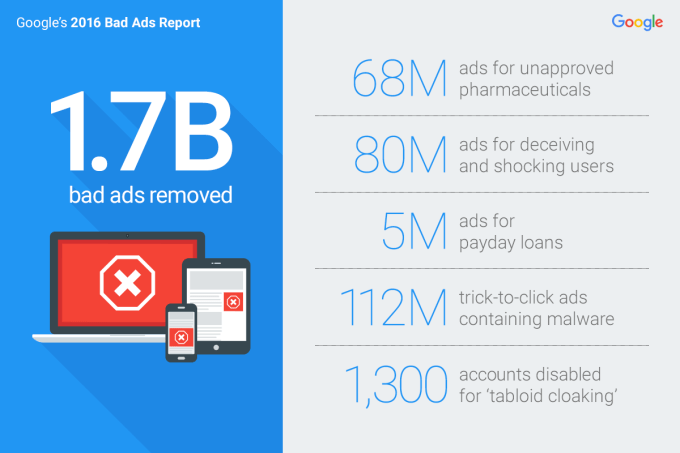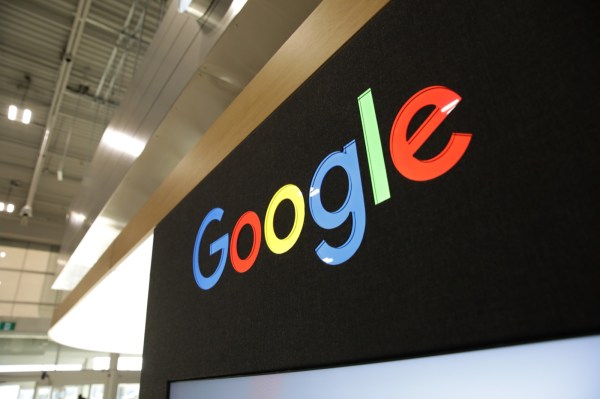Google has been under the gun when it comes to the power of its massive ad network — the biggest on the internet — being used for nefarious purposes, but the search giant is intent on using its tech to battle that problem. Today the company published its latest update on how its fighting spam, bots and other problematic “ads” on its network, and said that in 2016 it took down 1.7 billion ads that violated its policies.
As a point of context, this is more than double what Google took down the year before, it said.
Google is no stranger to the issue of fake news that has swept the internet and likely influenced a lot of what people view as “fact” that may not, in fact, be true. In addition to accusations that its news-optimised search format elevated dodgy sites to the same level as legit news sources, the search giant was also compelled to update its policy after its ad network got used by iffy “news” sites to promote their stories and give them a lot more visibility.
The company in 2016 changed its policies in terms of how it’s been tracking ads that are misleading or predatory. That’s included a policy introduced in July to ban payday loan ads, which led to five million ads being banned from its network.
Google said it also has been improving its tech to spot and disable dodgy ads faster. You may have noticed, for example, that “Trick to click” ads now come with system warnings before you go to the site they are linked to, as they can lead to malware links. Why these ads are not just removed altogether is another question, but in any case Google said that in 2016, its systems “detected and disabled a total of 112 million ads for ‘trick to click,'” six times as many as the year before.

Aside from tackling unethical ads such as unapproved pharmaceuticals — an issue that massively impacted Baidu in China — payday loans and counterfeit goods, and deceptive products, Google said it focused its efforts on clickbait advertising. The company refers to clickbait as ‘tabloid cloaking,’ in other words dressing an ad up as shocking news akin to a tabloid newspaper to get attention. It really isn’t hard to find examples of that across the world.
The search giant claims it took down 1,300 accounts that were performing such scams. That doesn’t seem like a huge number, but it just takes a few bad actors to do a lot of damage. Case in point, the 22 “cloakers” it nabbed in December were responsible for serving up ads that were viewed over 20 million times online in a single week.
Bad news though, that fight is very much ongoing. Google explained that tabloid cloaking is “gaining in popularity” because it is such an effective method to grab attention online, in much the same way that some websites have risen on the back of viral/shock news.
“While we took down more bad ads in 2016 than ever before, the battle doesn’t end here,” Google said addressing the threat broadly.
“As we invest in better detection, the scammers invest in more elaborate attempts to trick our systems. Continuing to find and fight them is essential for creating a sustainable, open web from which we all enjoy.”
